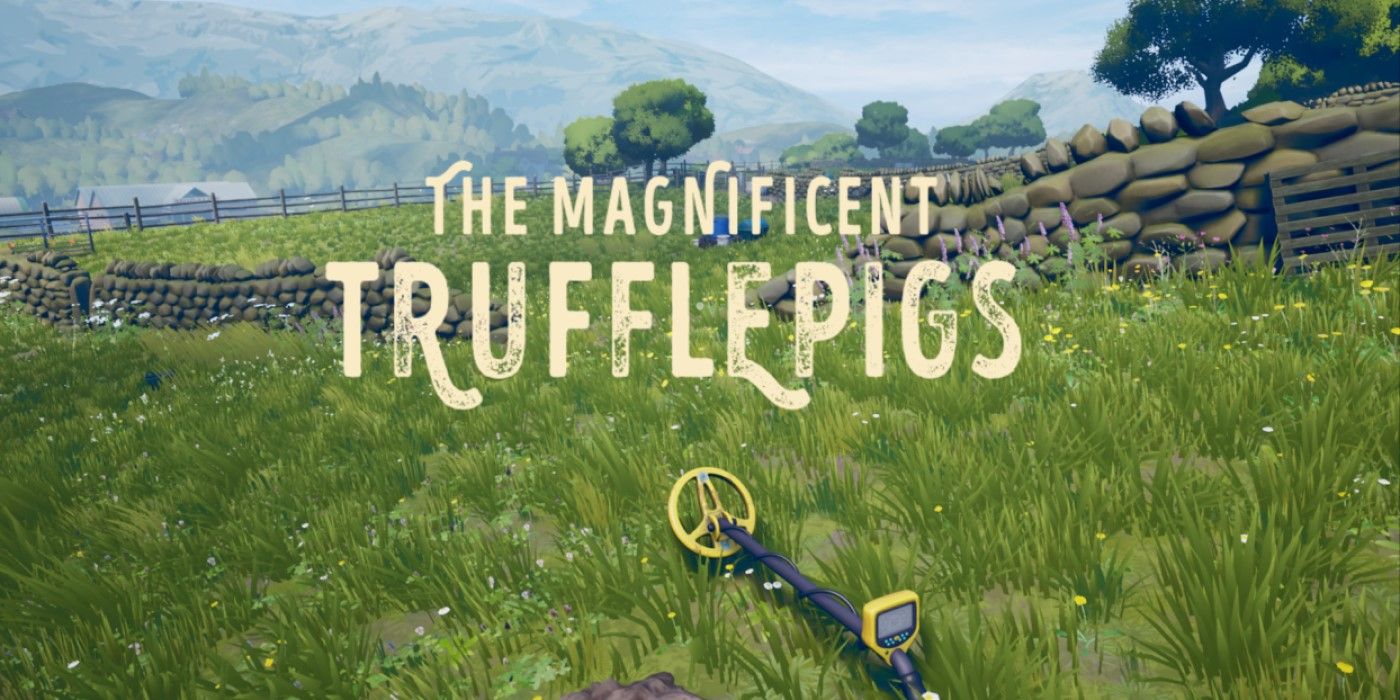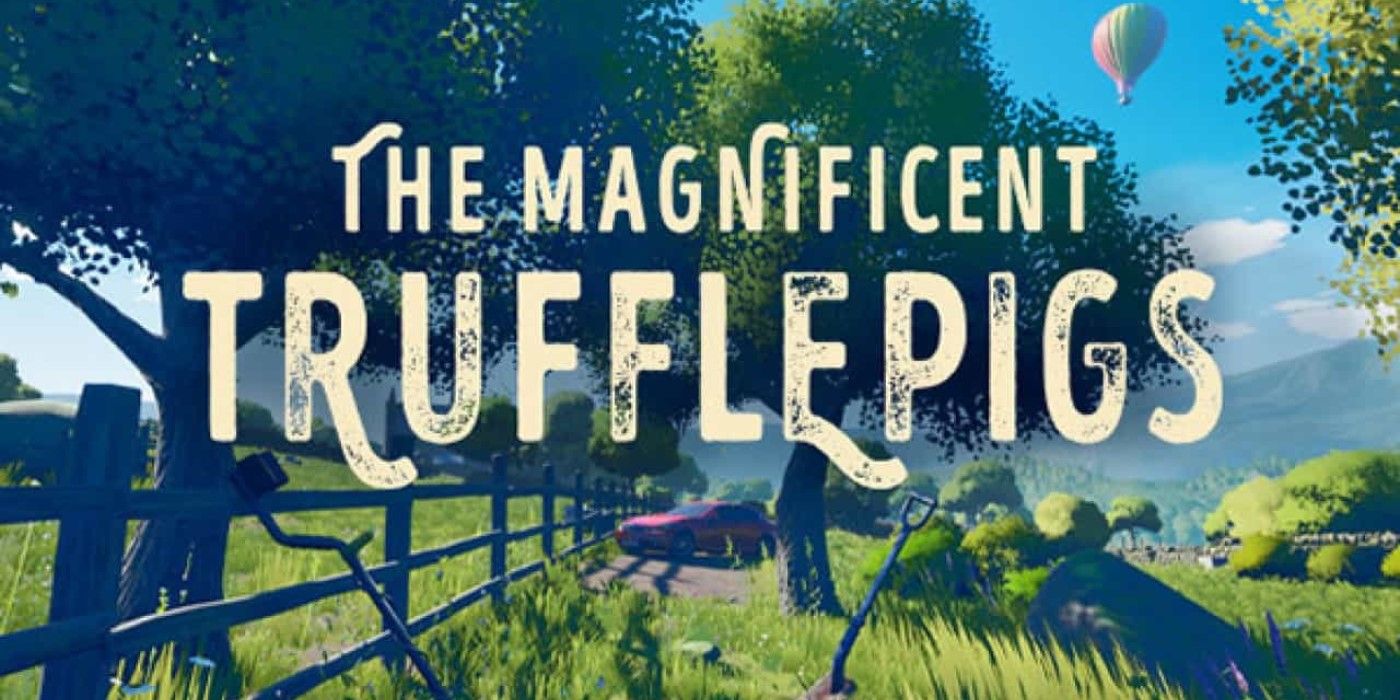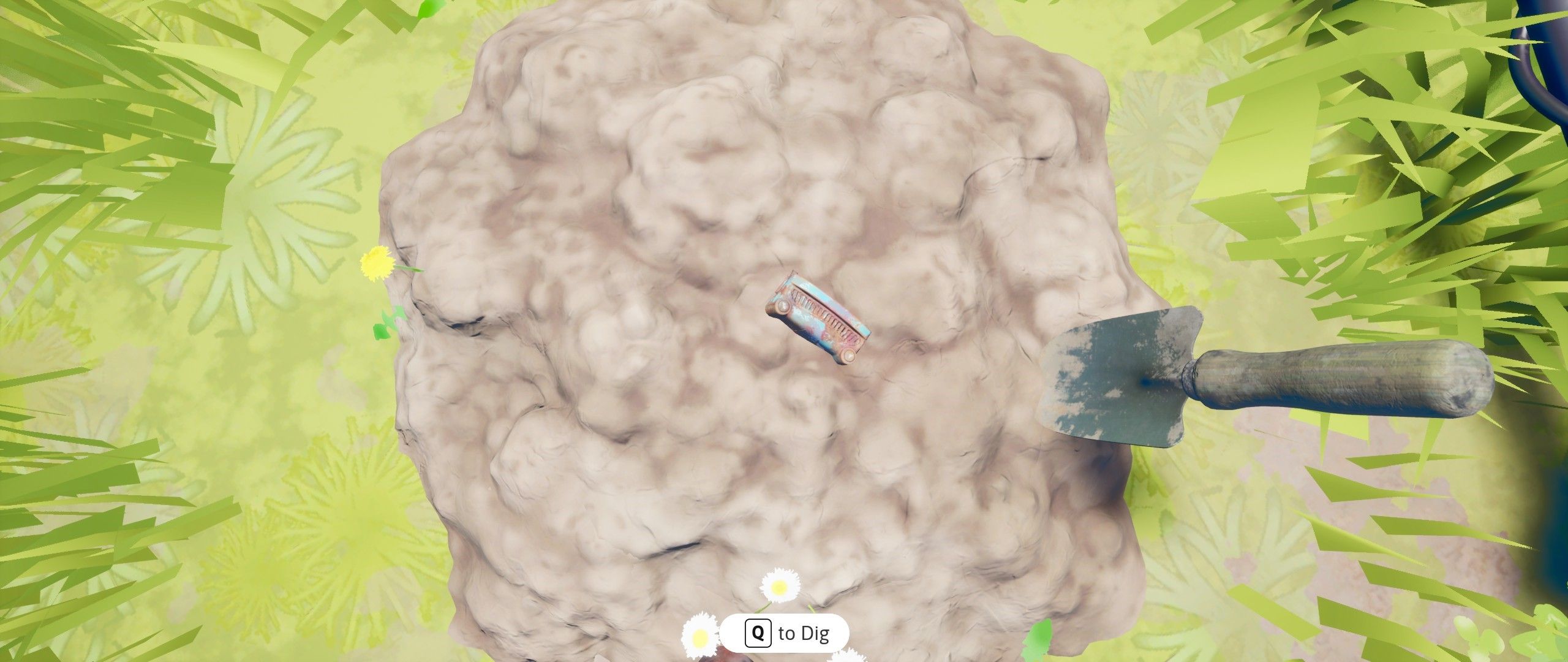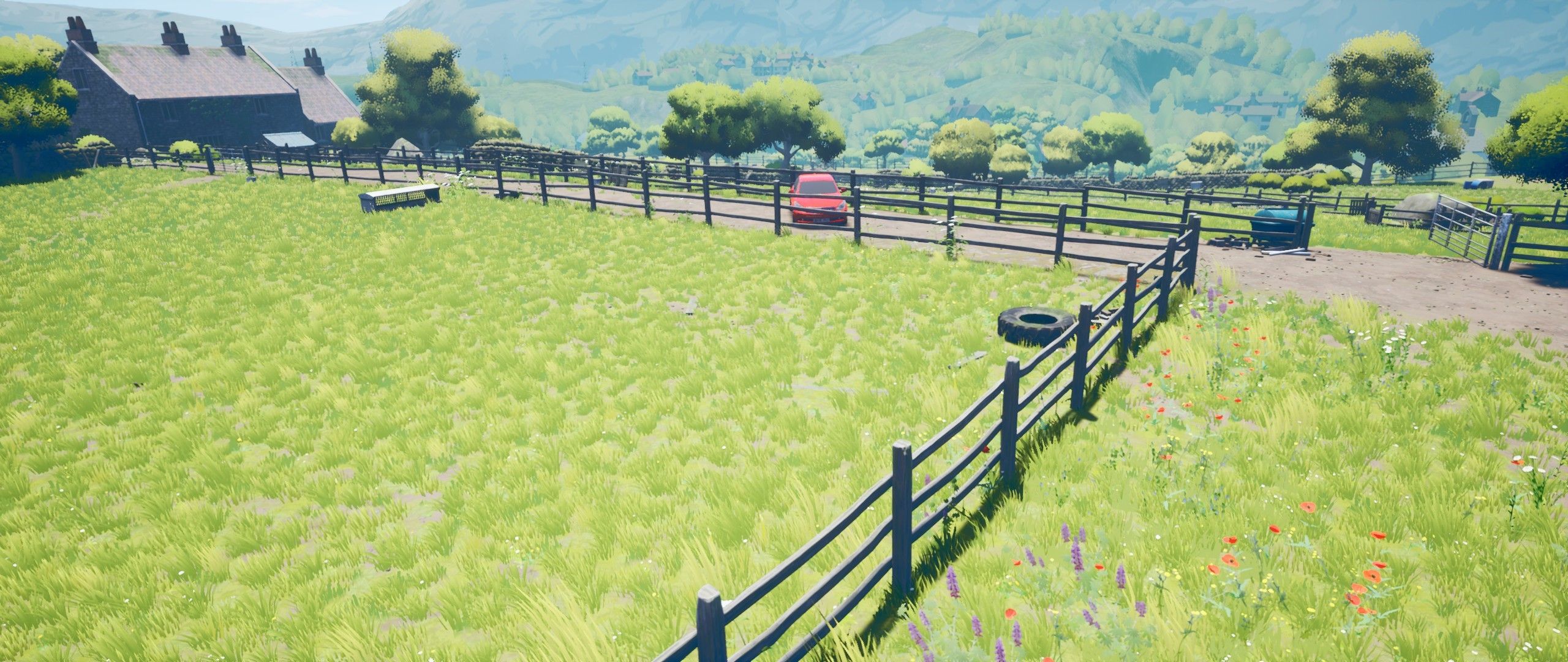The Magnificent Trufflepigs is an indie game that lets players relax by metal-detecting through the gorgeous English countryside of the small village of Stanning. Players take on the role of Adam as he helps his longtime friend Beth attempt to find the match to an earring she’d dug up in her youth. Beth turns to Adam for guidance about her life, which players can help her navigate as they also find out the truth about the relationship between the two characters.
Metal detecting is the main mechanic of the game, but players will be enticed to continue playing to learn more about Beth, Adam, and the complicated dynamic between the two of them. In an interview with Game Rant, the Creative Director of The Magnificent Trufflepigs and the founder of Thunkd, Andrew Crawshaw, discussed all things Trufflepigs, from game inspiration to location to how certain decisions were made about the game. One question is answered by Kevin Penkin, the composer for The Magnificent Trufflepigs. This transcript has been edited for brevity and clarity.
Game Rant: What was the inspiration for The Magnificent Trufflepigs?
Andrew Crawshaw: I was experimenting with exploration games, and I wanted to make something slow-paced. This is our first game, I knew it had to be something that could be made on a modest budget. I’m a fan of Detectorists (TV show) and while the premise of ‘detecting in fields’ answered part of the design problem, I also liked the laid-back pace that allows a stronger focus on the relationship between the main characters.
GR: What came first, the metal-detecting mechanic, or Beth’s backstory of being a “trufflepig?”
AC: The game started as a metal detecting game. There was an idea that the player would uncover a mystery that had literally been buried away, but early on it became clear that the relationship between the characters and something that was happening here and now was more exciting.
Metal detecting still felt like the perfect activity to wrap around it as it captures so many themes that Beth’s story throws up; luck versus skill, a sense of the past being uncovered, the concept of value.
GR: What are the “side items,” like taking a picture of the hot air balloon to send to Beth, meant to add to the story?
AC: The side items reveal background information. Some reveal more about the characters and their personalities, some reveal information about the location and how it relates to Beth, some are just for fun.
GR: The game seems designed with the intention of players going through it multiple times, especially with the New Game+ mechanic—is this done so they can find all the treasure, go through all the dialogue options, or both?
AC: There are treasure items that the player will always find, and then there are some items that are random. Some of the random items can only be found if you choose not to go for lunch early, or finish the day early. Game+ is a way for players to loop back and find everything.
GR: Does The Magnificent Trufflepigs have multiple endings?
AC: No, although it was something we experimented with. What finally caused us to ditch alternate endings was a need for the game to end exactly the way that Beth chooses it to end. You touch on Adam and Beth’s relationship later—but we wanted there to be no doubt that she’s in charge, and she makes all the decisions. The story made us do it!
GR: How did you decide to set The Magnificent Trufflepigs in an English village?
AC: Visually, it’s based on locations close to where most of the team live.
There’s also something about small, sleepy villages that makes it easy for any event to become overblown—like the discovery of a simple cow corpse evolving into alien visitations. This echoes Beth’s response to everything that’s going on. The setbacks she’s had suddenly feel huge, like her world is collapsing. We all do it, especially when we feel vulnerable—we overthink, expect the worst, and imagine demons when there aren’t any.
GR: The soundtrack for the game has been highly regarded among players—how did you determine what music you wanted to use in-game? What instruments were most important for conveying the tone you wanted the game to have?
Kevin Penkin: I’m extremely happy to hear people were receptive to the music in The Magnificent Trufflepigs. Andrew was incredibly generous with his time, so we were able to work closely to determine not only textural ideas that would work for the setting but also what types of music would function best for the story elements that were triggered by gameplay. It was a really fun and rewarding challenge to break down the music in so many ways to shape every interaction between Beth and Adam in its own way.
In terms of why specific instruments were chosen, the woodwinds were extremely effective at conveying melody while still working within established textures that represented the English Countryside. Piano was also extremely useful at being the machine to bridge the gap between acoustic instruments and electronic textures.
GR: Why have players go on the hunt for an earring? What is the deeper symbolism behind the earring?
AC: The earring represents Beth’s happiest memory. Like many people that aren’t having a great time, she has a romantic view of the past—that everything was better then—and she wants to recapture that feeling. She fantasizes about finding the other one. We chose something that comes as a pair so it was easier for Beth to imagine the other might still be out there.
GR: How did you decide to get Arthur Darvill and Luci Fish involved as Adam and Beth? Were the characters designed with their voices in mind?
AC: Luci was originally brought on to record some dialogue for the demo and she instantly became Beth; we knew we had to bring her back to record the final version of Beth.
We had written a biography of the characters, and Arthur’s name was on there as the kind of personality we wanted for Adam. When we partnered with AMC and SundanceTV they had a relationship Arthur, so they reached out and it happened!
GR: What was the idea behind never showing Beth or Adam? Why choose to not show the main characters?
AC: We spoke to an animation house about building and animating a rig to show hands holding and moving items but their estimate was close to the entirety of our whole development budget. That was early on, while the story was still being developed. It started out as a design constraint but became a story feature as the script evolved.
GR: Some players seem to dislike Beth quite a bit—what was the inspiration behind her character? Was she designed with the intention of being unlikeable?
AC: Imposter syndrome, feeling that friendships are suffering because of being a workaholic, overthinking everything, the way [we] worry about the version of [ourselves] that [we] think everyone else expects [us] to be, the way [we can] get so anxious that [we] role-play conversations to try and figure out how to deal with certain situations, [are all experiences that factor into Beth’s characterization.]
It’s not that we wanted Beth to be unlikeable, but her journey is about self-improvement, developing resilience, listening to herself, and becoming the person that she really wants to be rather than the person she thinks everyone else expects her to be. That means she has to peel off a lot of layers, exposing and acknowledging her worst traits.
GR: There seems to be some contention among players regarding Adam’s presence in the story—is he meant to be interpreted literally, or does he only exist in Beth’s imagination? Even if he is or isn’t real, why choose not to give more context as to why Beth’s friends don’t like him?
AC: The game is fairly explicit about who Adam was, and what the relationship between Beth and Adam was. There are clues sprinkled liberally through their conversations. We’re less explicit about how their relationship works now but there are plenty of clues.
Beth thinks she can’t be completely open with anyone—she’s barely speaking to her friends and her sister is more of a rival. But right now, she needs a good pal to talk to. She has this romantic idea that she can recapture a happy moment from the past, and she associates Adam with that time. The only problem is, once she starts to talk about all of the things that she’s been reluctant to face up to, there’s no hiding from the truths that are going to emerge.
Maybe this is where some people get frustrated with the game? It becomes harder for some people to accept that there are metaphors and other storytelling devices if there are humans involved. That was partly the reason for including the line about the pointlessness of trying to wrap everything in a formula. We’ve got an innate desire to neatly tie everything up, and that’s impossible with human emotions.
Games require a partial suspension of belief. It’s easier to settle into more fantastical roles—being Lara Croft, or Nathan Drake or Masterchief—but however engaged you are in those roles, you don’t actually think you’re that character. Beth knows that Adam is a character, and when she steps away, she’ll still be Beth.
We all roleplay conversations and scenarios in our head. Trufflepigs is the story of how Beth does that to figure out what she wants and needs to do next. It’s her way of escaping reality, but she also realizes this kind of escapism can only be a short-term respite. Whether you’re Beth, role-playing a rendezvous with her former friend; or a gamer, spending hours planting virtual turnips, you won’t solve issues by constantly hiding from them.
[End.]
The Magnificent Trufflepigs is available now for PC and Switch.





